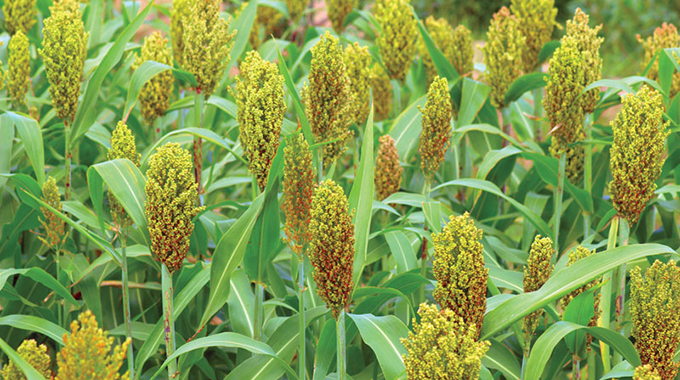
The production of small grains is not only critical for household food security, it is also beneficial to health and is climate-smart.
Climate-smart agriculture increases productivity and enhances adaptive capacity sustainably.
There are many reasons and benefits why Zimbabwe should prepare to promote, implement and market production of small grains.
Small grain crops are drought-tolerant and suitable for semi-arid areas like Masvingo and Matabeleland.
As a result of the effects of climate change, it is important to promote the production of crops that do not require a lot of rainfall to mature.
Against the backdrop of climate change, this year ought to see a marked shift to, and an increase in the total hectarage planted to small grain crops as part of a deliberate strategy to ensure household and national food security.
Arguments for promoting the consumption of small grains are many, but essentially they are persuasive.
They are high in nutrients and fibre, lower the risks of heart diseases and stroke.
Small grains also lower the risk of Type 2 Diabetes, reduce chronic inflammation, lower the risk of obesity and overall, they have better nutritional value than maize.
In addition to the health benefits, small grain crops have the ability to perform relatively well in arid ecological regions.
This means they are the most appropriate crops, particularly for Masvingo and Matabeleland provinces.
Changing consumption patterns to small grains can save people and the country considerable resources in terms of medical bills and importation of drugs required to treat conditions arising from inappropriate dietary habits.
Extending production of small grains throughout the country will alleviate food insecurity at household and national levels.
Millers and food manufacturers have been instrumental in shifting preferences to refined and super refined maize-meal and flour.
Getting them to appreciate the benefits of small grains will enable them to increase milling capacity and roll out campaigns to promote the consumption of small grains.
They will follow where the money is because the national numbers represent endless opportunities for growth, expansion and prosperity for their businesses.
Even the Traditional and Organic Food Festival (TOFF), held annually in September-October needs to assume greater significance because consumption of small grains must no longer be viewed as a dietary habit for the elite or food for the poor rural folk.
The TOFF normally brings together growers or their representatives from across the country.
Engaging them as well as other farmer organisations much earlier and ahead of the next rainy season, will help them ramp up their plans and capacity to meet national demand for small grains.
At every one of the agricultural shows that will be taking place throughout the country, the encouragement and emphasis to farmers should be a shift to reliance on small grains.
This way, there is certainty that there is a shared approach to switch to small grains.
Increased production of small grains will result in their availability, with the resultant fall in the price of the products.
The Grain Marketing Board (GMB), with its network of depots and milling capacity, could be among the lead champions in promoting greater consumption of small grains.
GMB could also play a significant role in the distribution of small grain seed as well as being the lead buyer of the small grains.
It has a head-start in that it is already producing the Silo range of products that include rapoko, pearl millet, sorghum and sugar beans.
As part of a strategy to speed up migration of preferences from maize-meal to small grains, there could be a range of incentives.
The reason why there is an increase in tobacco growers is simply the incentives and the attractive prices for the producers.
Given the savings on food imports, it makes economic sense to stimulate local production and avoid costly food imports.
In recent times, the country has seen a proliferation of innovation hubs at institutions of higher and tertiary learning.
Based on results from the innovation hubs, there should be a sharp rise in the uptake of sadza, porridge, snacks, bread, buns, cakes, scones and rolls made from small grains.
Then working together with the National Nutrition Council, industry, marketers, the media and social platforms can mount promotional campaigns for the great migration from maize meal to small grains.
Consumption of small grains means healthy eating and combating the rise in non-communicable diseases.
